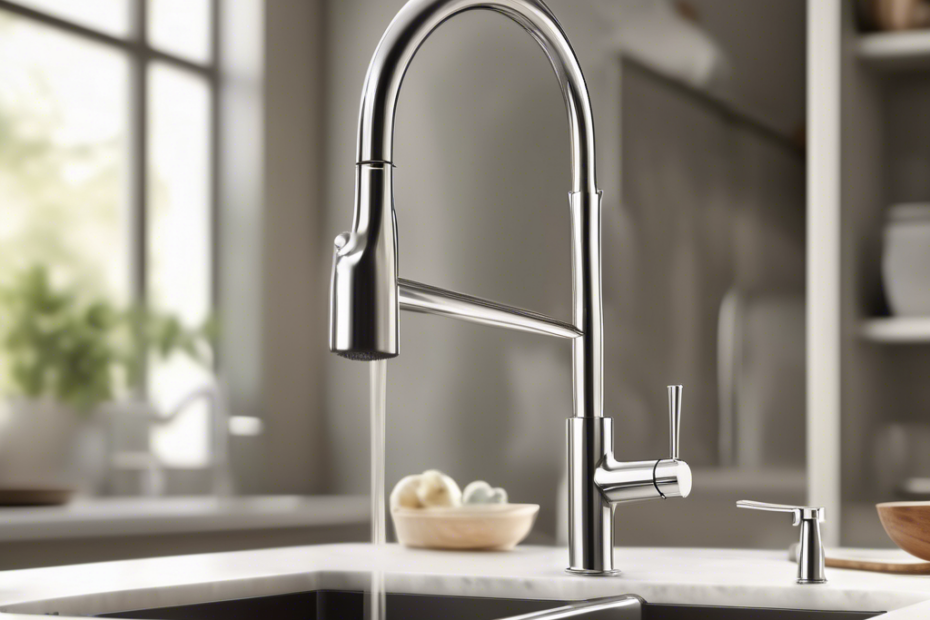Water flows out of kitchen faucets at different rates. This flow rate is measured in gallons per minute (GPM). The average GPM for a kitchen faucet can vary, but there’s a general consensus.
Understanding GPM
GPM, or Gallons Per Minute, measures how much water flows out of your faucet each minute. It’s a simple way to gauge water usage. The higher the GPM, the more water comes out.
Factors Influencing GPM
Faucet Type
Not every faucet is the same. Some faucets are designed to have a higher flow rate:
- Standard Faucets generally have a flow rate between 1.5 to 2.2 GPM.
- Low-Flow Faucets aim to conserve water and often have a GPM of 1.5 or less.
Regulations
Government laws and regulations also play a role. In the US, the Environmental Protection Agency’s WaterSense program sets the standard for water-efficient products:
- WaterSense labeled faucets: max 1.5 GPM.
Average GPM in The US
In many homes, the average kitchen faucet has a flow rate around 1.5 to 2.2 GPM. Older faucets might have higher rates, up to 5 GPM or more, while modern designs prioritize efficiency.
| Faucet Type | Average GPM |
|---|---|
| Standard | 1.5 – 2.2 |
| Low-Flow | < 1.5 |
| Older Models | > 3.0 |
Water Efficiency
Why does GPM matter? Simple. Lower GPM means:
- Less water waste
- Lower utility bills
- Better for the environment
But it’s a balance. Too low a GPM and you’ll be waiting forever to fill a pot.
Personal Experience
In my own kitchen, I recently switched to a WaterSense labeled faucet. I noticed right away the GPM was lower. It took just a bit longer to fill the sink, but I felt good about conserving water. Plus, my water bill dropped!
Modern Technology
Tech zooms forward. New kitchen faucets feature aerators. Such gadgets mix air with water, maintaining pressure while reducing flow. Even with lower GPM, they blast enough water for all tasks.
Smart Faucets
Smart faucets are trendy. They adjust GPM depending on the task. Washing hands? Lower flow. Filling pots? Higher flow.
Testing Your Faucet’s GPM
Curious about your faucet’s GPM?
- Get a container marked in gallons.
- Turn on the faucet for 1 minute.
- Measure the water collected.
This simple test reveals your faucet’s efficiency.
Upgrading Your Faucet
Thinking of a switch?
- Look for WaterSense label.
- Check for aerators.
- Consider sensor-based faucets for better control.
A new faucet isn’t just about looks; it’s about saving water too.
Conclusion
Understanding GPM helps make informed choices. The average kitchen faucet in the U.S. flows at 1.5 to 2.2 GPM, enough for daily tasks while being water-efficient. Upgrading to modern faucets brings many benefits. So, next time you’re in the kitchen, consider the GPM of your faucet and what you can do to make a positive change!
